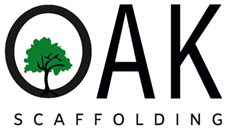Title Page
-
Site conducted
-
Company
-
Supervisor
-
Conducted on
-
Prepared by
-
Location
-
Scaffold Building/Section/Location
General Requirements
-
Is the supporting surface where the scaffold is going to be erected capable of withstanding the weight of the scaffold?
-
Is there any potential for contact with exposed electrical equipment and conductors (i.e., overhead energized power and communication lines) where the scaffold is going to be erected? Will the scaffold be outside the limits of approach of the energized electrical equipment and conductors?
-
Are the workers who are erecting or using the scaffold trained and supervised in how to conhrm structural capability?
-
Has the scaffold been installed as specified by the manufacturer's instructions, applicable standards, and engineer's requirements (i.e., have all the cross braces been installed)?
-
If applicable, are the manufacturer's or engineer's instructions readily available on site?
-
Has the scaffold been inspected before each use i.e., green tag and red tag system)?
-
Is there a safe way to get on and off the scaffold, such as a ladder?
-
Is the scaffold able to withstand the loads likely to be imposed on it?
-
Where applicable, have guardrails and toe boards been installed on all open sides where the open space is greater than 30 cm (12 in.) (i.e., the open space between the platform and the adjacent structure)?
-
Are the platforms fully planked?
-
Have the platforms been secured against separation from the supporting equipment, structure, or surface?
-
Is the platform fully planked or decked with no gaps greater than 1 inch?
-
Is the scaffold erected with the ledgers and bearers level and the vertical members plumb?
-
If applicable, is the scaffold constructed, installed, and used in accordance with the written instructions of a professional engineer with respect to the following?<br>-Bracing, if the scaffold is enclosed by a tarpaulin or other cover<br>-Scaffolding higher than 38 m (125 ft.)<br>-Scaffolding higher than 25 m (80 ft,) if stairways are o included<br>-A scaffold used to support a temporary floor<br>-A scaffold suspended or cantilevered from a structure<br>-A scaffold system supported by a centenary line<br>-A needle-beam scaffold<br>-An outrigger scaffold<br>-Other high-risk situations (e.g., suspension height exceeds 300 ft.)-
-
Is the scaffold height greater than three times its minimum base width? If yes, is the scaffoid effectively guyed or secured to a building or structure?
-
Is there a safe way of getting materials to each platform on the scaffold (i e, workers cannot carry materials or equipment up or down a ladder)?
-
Are workers required to work below the scaffold? If so, is appropriate protection against falling materials in place?
Wood frame Scaffold Requirements
-
Is the lumber used to construct the scaffold graded and marked to the National Lumber Grades Authority's Standard Grading Rules for Canadian Lumber<br>(i.e., No. 2 or better lumber that is Douglas fir-larch, hemlock-fr, spruce-pine-fir, or coast Sitka spruce)?
-
Is the lumber free of cracks, splits, knots, and damage?
-
Have the vertical uprights been spliced? If yes, have they been spliced as specifed by WCB Standard WPL 1-2004, Design, Construction and Use of Wood Frame Scaffolds?
Manufactured Scaffold Requirements
-
Are all braces, bearers, clamps, and other connections appropriately secured?
Rolling Scaffold
-
Are wheels and casters locked while workers are on the scaffold?
-
Is the scaffold designed and intended to be moved while a worker is on the platform?
Other Requirements
-
Is the work platform being suspended from a crane or hoist? If yes, are appropriate procedures, manufacturer's instructions, and engineering documentation available on site (e.g., rated capacity, critical lift, and designated emergency platform (DEP)?
-
Is the work platform* being mounted on a lift truck? If yes, is appropriate documentation from the manufacturer<br>and/or a professional engineer available on site and is it in accordance with the applicable standard (e.g., rated capacity and platform dimensions)?<br>A forklift-mounted work platform may be used to support workers only if other conventional means are not practicable
Additional Observations
-
Other
-
Other
-
Other
Signature
-
Inspected by
-
Pictures Attached












